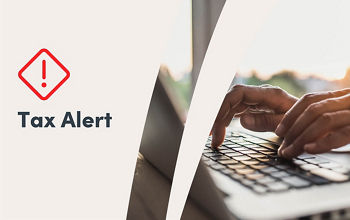resources
New York State Paid Sick and Safe Leave Ordinance
April 23, 2020
Introduction
On April 3, 2020, the state of New York passed an Ordinance that requires employers to provide sick and safe leave for all New York employees. Paid Sick and Safe Leave accrual begins on Sept. 30, 2020, while the use of this benefit begins on Jan. 1, 2021.
Eligibility and Accrual
The new sick and safe leave provisions apply to all employers within the state of New York. The amount of leave employees can accrue, and whether it is paid or unpaid, depends on the employer’s size and/or revenue in a calendar year. The calendar year is defined as January 1 through December 31.
- Employers with 100 or more employees: employees must be allowed to accrue and use up to 56 hours of paid sick leave.
- Employers with between five and 99 employees, and employers with four or fewer employees and a net income greater than $1 million: employees must be allowed to accrue and use up to 40 hours of paid sick leave.
- Employers with four or fewer employees and a net income less than $1 million: employees must be allowed to accrue and use up to 40 hours of unpaid sick leave.
Employers have the option of allowing accrual of 1 hour for every 30 hours worked or frontloading the hours at the beginning of the calendar year.
Employees can carry-over accrued, unused paid sick and safe leave from year to year. There is no requirement of a max carry-over amount. However, employers are permitted to cap the sick and safe leave that employees can use to the applicable amount of either 40 or 56 hours per year. Employers also have the ability to establish their own calendar year for accruals and carryover, as long as it is a regular and consecutive 12-month period.
Acceptable Use
Employees can use accrued paid sick and safe leave for any of the following reasons;
- A mental or physical illness, injury or health condition of the employee or the employee’s family member, regardless of whether it was diagnosed or required medical care at the time the employee requested the leave.
- The diagnosis, care or treatment of a mental or physical illness, injury or health condition of, or need for medical diagnosis of preventative care for, the employee or the employee’s family member.
- An absence from work related to the employee or the employee’s family member being a victim of domestic violence, family offense, sexual offense, stalking or human trafficking, including:
- to obtain services from a domestic violence shelter, rape crisis center or other service program;
- to take actions to increase safety, including participating in safety planning or temporarily or permanently relocating the employee or the employee’s family members;
- to meet with an attorney or a social services provider to obtain information and advice on, and prepare for or participate in, any criminal or civil proceeding;
- to file a complaint or domestic incident report with law enforcement;
- to meet with a district attorney’s office;
- to enroll children in a new school; or
- to take any other actions necessary to ensure the health or safety of the employee or the employee’s family members, or to protect those who associate with or work with the employee.
A “family member” for the purposes of this ordinance, include not only immediate family members, such as parents, spouses, domestic partners and children (biological, adoptive, foster and step), but also grandparents, grandchildren and the child or parent of an employee’s spouse or domestic partner.
Westchester, NY and NYC, NY Paid Sick Leaves
The ordinance does contain exceptions for the Westchester County and New York City paid sick leave ordinances. The State law says that it does not prevent any city of more than 1 million people from enacting a law that meets or exceeds the new law’s requirements, and any paid sick leave benefits provided by a municipal corporation in effect as of Sept. 30, 2020 shall not be reduced or limited as a result.
Recordkeeping Requirements
The ordinance requires employers to maintain records of the amount of leave provided to each employee for a period of six years. Upon oral or written request from an employee, within three business days, an employer must provide an employee with a summary of the amounts of sick and safe leave accrued and used by the employee in the current year and/or any previous calendar year.
Next Steps
Paylocity will have the accrual requirements set up with our system prior to September 30, 2020.
For more detailed information on New York States Paid Sick and Safe Leave requirements, please click here.

